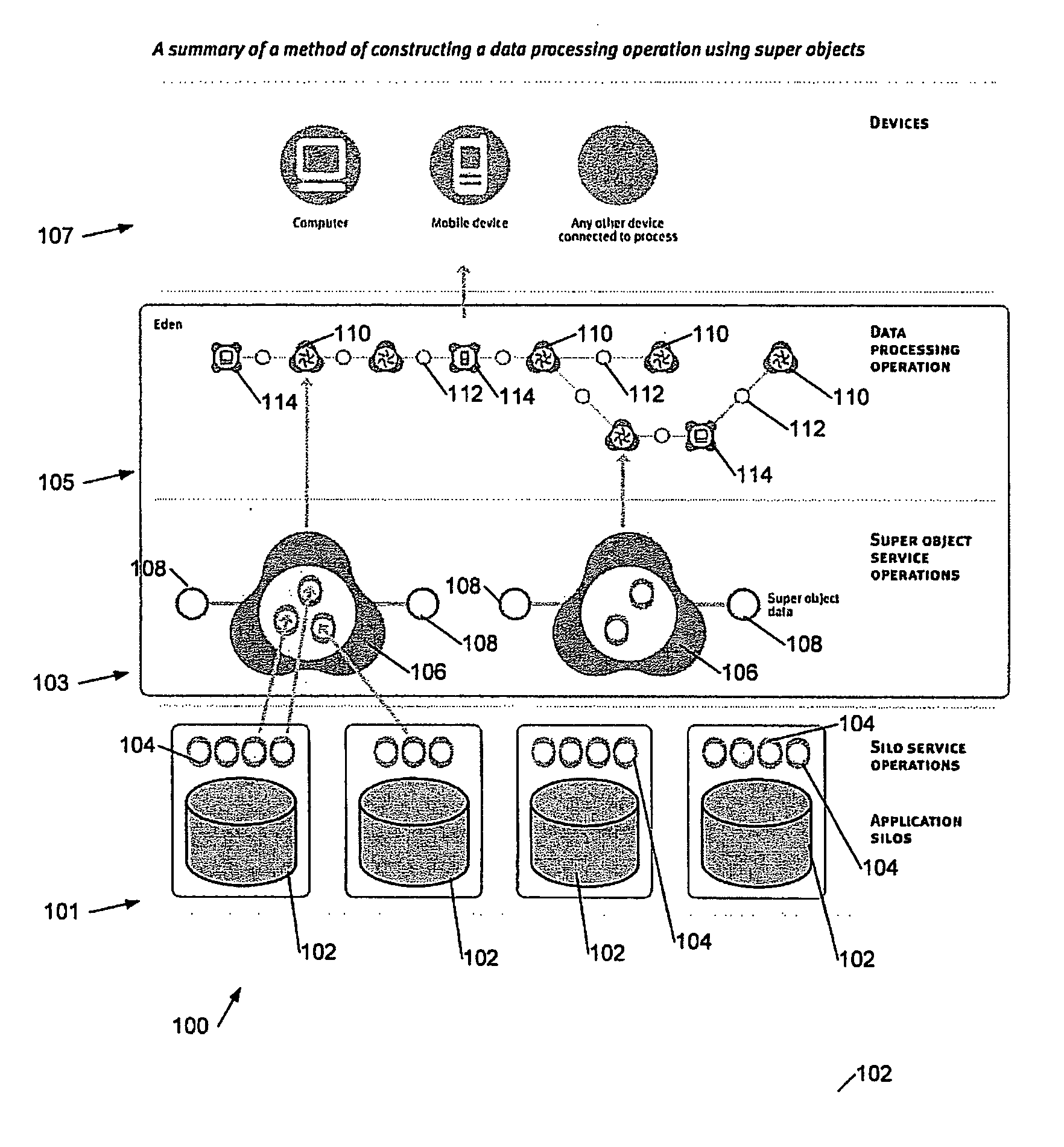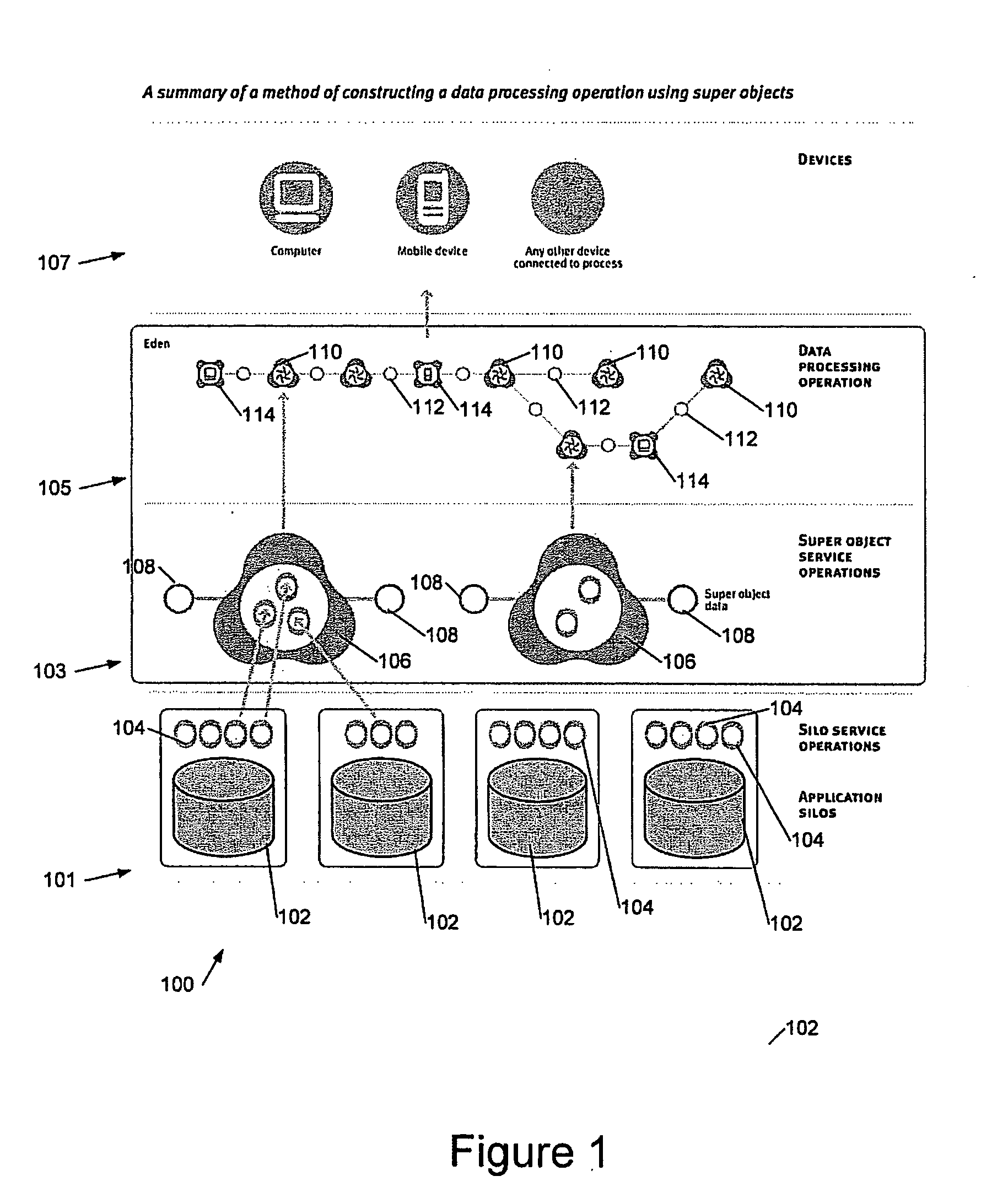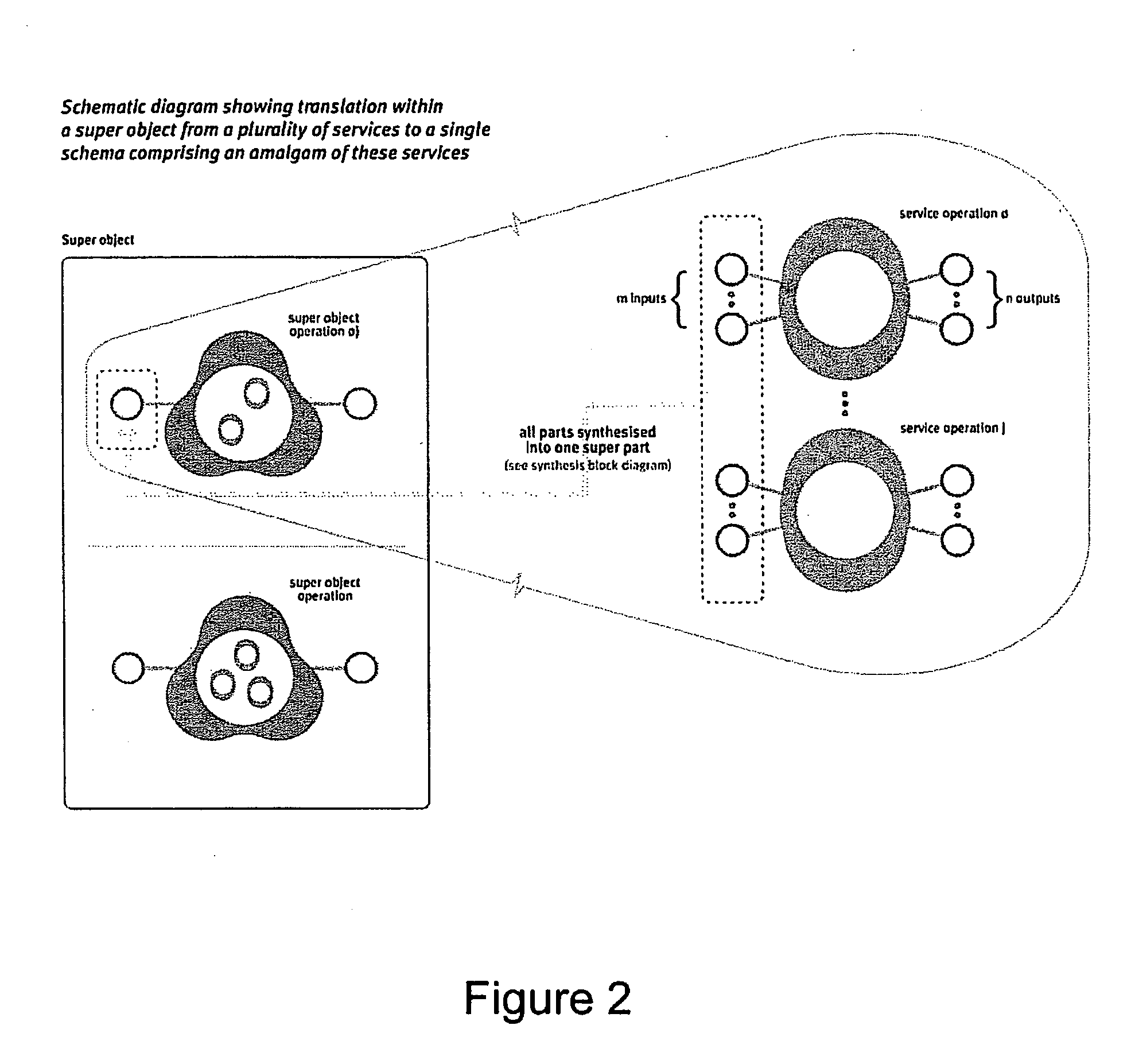[0006] In embodiments creating a set of superobjects expressed as an aggregation of resources, such as data and / or services in particular web services, providing a common interface to the underlying systems, facilitates a very straightforward drag-and-drop
graphical user interface to the construction of a user-definable process for an enterprise workflow. To illustrate the simplicity with which large complex databases may be queried, in one embodiment as untrained user with a
mobile phone is able to create a process to retrieve relevant football results. In another example an NHS nurse is able to construct a process to retrieve
patient information from a plurality of underlying systems storing complex and sometimes overlapping data.
[0008] The existing underlying systems are generally substantially separate, although there may be some overlap as mentioned in the introduction, and these provide real resources; a superobject may also incorporate resources made available over
the Internet. The existing systems may include any conventional computer
system providing resources and embodiments of the invention are particularly useful in conjunction with large, business-wide databases, for example CRM systems such as
KANA (
trademark) or HEAT (trademark). As well as data such systems typically provide a range of services which are aggregated, as described in more detail later, to provide super
enterprise services. These may be represented as single graphical units and then manipulated in a very straightforward and intuitive manner on a platform requiring relatively little computing power. For example code to implement embodiments of the above described method can run in memory. Thus with the above described approach it is simple and quick to construct workflow procedures which interact in a complex manner with a number of large-scale enterprise data processing systems substantially transparently to a user.
[0010] The skilled person will understand that there is a problem with attempting to form a query across two or more existing, generally separate computer systems as each
system will have its own
database engine specific to the
system. However by aggregating data from two or more existing systems in a set of one or more superobjects, in preferred embodiments stored in memory, one can construct a query, for example in a conventional
database query language such as
SQL, to act on the set of superobjects and thus span information in two or more databases. Implementing a superobject level of data also facilitates recording and / or controlling access to data and / or services in one or more of the underlying systems. This is because this can be performed at superobject level, in particular at an interface to a superobject upon which, say, a query operates, rather than adding audit trail
logging separately into a
database engine of each underlying system.
[0012] In preferred embodiments of the above methods a superobject interfaces using a markup language, in particular
XML (
extensible markup language) such as
XML version 1.0. In this way superservices can be configured to appear to a graphical workflow procedure defining engine as web services, a process of merging and / or translation within a superobject hiding the complexity of the underlying structure. This further facilitates querying of the superobjects, for example by providing a query module operating on superobject
metadata to locate desired web services, for example using an
XML schema to define requirements for such a service. This structure also facilitates the implementation of rules to control and / or audit access, in particular for data at or above the enterprise data or superobject level. This facilitates control of access to the underlying systems where a particular role or user may be allowed access to portions of some or all the systems but not to other portions, the particular portions of data / services to which access is permitted being dependent upon user permissions.
[0013] In preferred embodiments the superobjects include a data read superobject, a process superobject, and a data output superobject. The data output superobject is preferably configured for writing data back to one or more of the underlying systems in a coherent manner. Thus, for example, where the same data appears in two or more systems, albeit perhaps under different names, a superobject can be configured to update both systems as necessary. Likewise duplication of data can be avoided by selecting and / or merging data from two or more systems in a superobject even when the systems themselves do not include explicit links between the same data in the different systems.
[0015] Thus in preferred embodiments of the method at least one superobject has a plurality of states and associated state identification data, which may be formatted as an
XML data subtype having a plurality of switches. For example, for a service superobject there may be a plurality of states of the superobject that returned from the service; and for a data superobject the state of the superobject may depend upon the data retrieved. Preferably a plurality of links is provided between the at least superobject having a plurality of states and other superobjects; advantageously where such a superobject is represented in a
graphical user interface by an icon one link may be provided for each state of the superobject, that is for example for each subtype into which it falls. This facilitates the creation of complex data processing operations without
programming in a conventional sense. To facilitate construction of a data processing operation or
work flow superobjects for data or services may be given easily recognisable icons such as a telephone, document and the like, that is related to the data / service with which they are associated.
 Login to View More
Login to View More  Login to View More
Login to View More 


